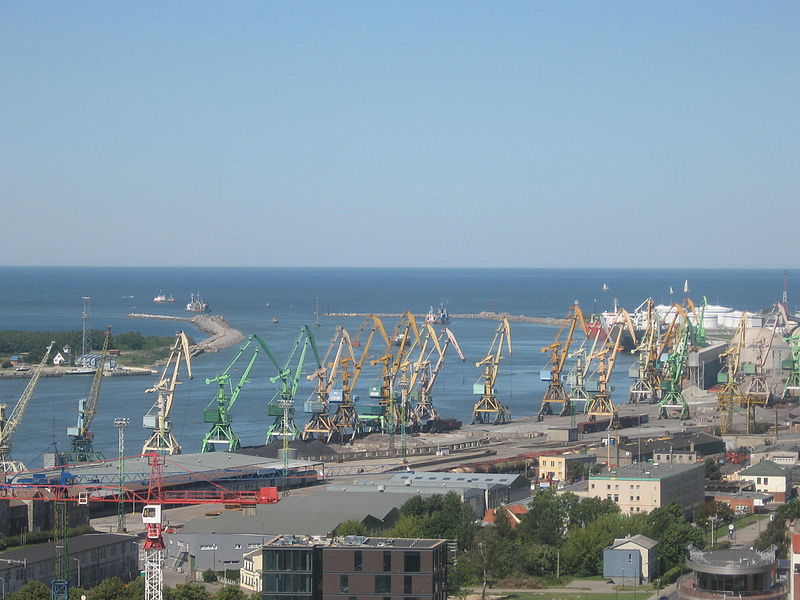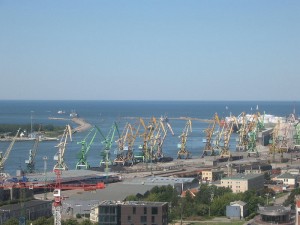

Summary
Lithuania has opened a floating liquid natural gas (LNG) import terminal in Klaipeda on Oct. 27. The LNG terminal, once fully operational, will play a significant role in reducing Lithuania and other Baltic states’ energy dependence on Russia. This will weaken Russia’s use of energy as a political tool in the Baltics, and in turn offer some limited protection for the Baltic countries in the standoff between Moscow and the West.
Analysis
The debut of the LNG terminal marks an important milestone for Lithuania, considering Klaipeda will serve as the first operational LNG importing facility in all of Central and Eastern Europe. The Europeans have long desired to diversify away from Russian energy supplies, but such plans are often slow to materialize. This is particularly the case for Central and Eastern European EU countries, which are more dependent on Russian supplies than their Western European counterparts and which have not been able to significantly diversify their natural gas imports in the past.
Reducing Russian Energy Dependence
Lithuania — which, like the other Baltic states of Estonia and Latvia, currently imports 100 percent of its natural gas from Russia — broke ground on an LNG import project in 2012. Next week the terminal will become operational. However, the opening will not immediately or completely change Lithuania’s energy picture. Following its opening, the Klaipeda LNG import terminal will undergo an estimated two months of testing. Commercial deliveries will then begin shipping at the start of 2015 under a contract with Norway’s Statoil to import 540 million cubic meters (mmcm) per year, around 17 percent of Lithuania’s 3.27 billion cubic meters (bcm) of annual natural gas consumption. Still, Lithuania’s long-term contract with Russia for natural gas imports will not expire until the end of 2015.
After 2015, Lithuania’s import terminal could begin to drive important changes. The terminal itself has an annual capacity of 4 bcm, which if utilized could meet all of Lithuania’s natural gas needs. The terminal could also, at least partially, supply neighboring Latvia and Estonia, which have an annual consumption of only 1.08 bcm and less than 500 mmcm, respectively. Such supply flows would only be achievable with upgrades to pipeline interconnectors between Lithuania and Latvia, though those upgrades are scheduled to be completed by the end of 2015. Given that Lithuania would no longer be contractually obligated to import supplies from Russia at that point, the Baltic countries’ energy paradigm could look very different in 2016.
This is not to say that Lithuania and the other Baltic states will necessarily completely diversify away from Russia in 2016. Rather, the new terminal gives them a credible alternative and leverage to renegotiate prices with Russia as German and Italian companies have done in the past few years. Indeed, Lithuania already secured a 20 percent discount from Gazprom in May because of its upcoming LNG terminal debut, bringing its price down from $500 per thousand cubic meters (mcm), one of the highest in Europe, to $370 per mcm. In comparison, the price of LNG imports from Statoil would likely be in the range of $328 to $366 per mcm. Lithuanian President Dalia Grybauskaite has said that any future agreements with Gazprom would be conditional upon changing the pricing formula to better reflect the spot market, where Vilnius will soon be able to buy LNG supplies to fill up storage supplies in Klaipeda or in the Incukalns underground gas storage sites. Lithuania can make this demand as concerns over supply cuts diminish. However, the spot market is not always cheaper than contractual prices and can spike during times of inclement weather in Europe.
Likely Outcomes
It is particularly important for Lithuania to have such leverage in light of the current crisis in Ukraine, which has led to, among other things, a cutoff of Russian natural gas supplies to Ukraine since June. This cutoff has caused fears among European countries downstream that their own supplies will be affected, and EU countries neighboring Ukraine, including Poland, Slovakia, and Romania, are already experiencing partial decreases in supply flows. The LNG terminal would thus shield Lithuania, and potentially the other Baltic states, from the effects of any future politically motivated energy supply disruption.
Lithuania’s LNG import terminal is also significant beyond the energy realm, especially as the Baltic states find themselves on the front line of the broader competition between Russia and the West, which has spilled over into much of the former Soviet periphery. The Baltic states, led by Lithuania, have been vocal supporters of Ukraine’s Western integration efforts and of greater regional energy cooperation, but their energy dependence on Russia has limited their ability to actually act. Making significant headway on interests in Ukraine or in support of the opposition in nearby Belarus will continue to be difficult for Lithuania, given its small size and resources. Vilnius will likely be more successful at pushing regional integration with Baltic and Nordic countries, especially in diversifying away from Russian energy.
Still, Russia will retain other means of power over Lithuania and the Baltic states through the sizable populations of ethnic Russian minorities in these countries and Russia’s military posturing in Kaliningrad and the Baltic Sea. However, the potent energy tool that Moscow long enjoyed will, in the coming years, no longer be as effective in the region.
Source: The Baltic Times




